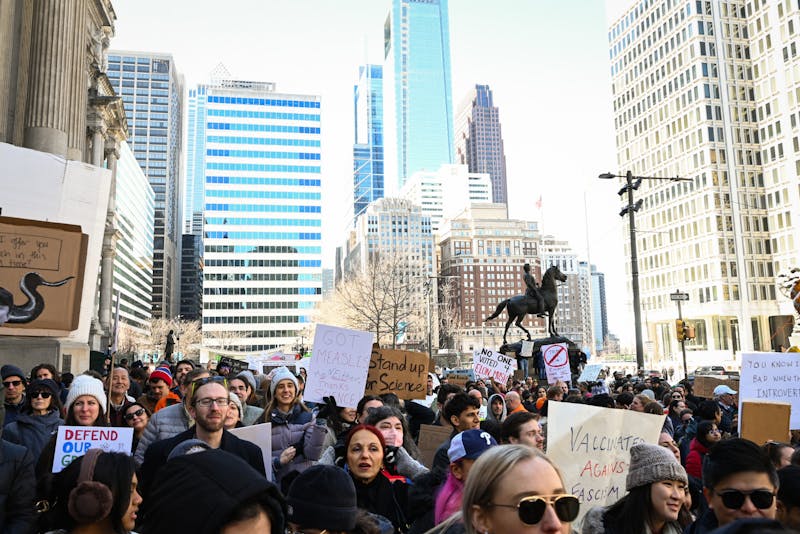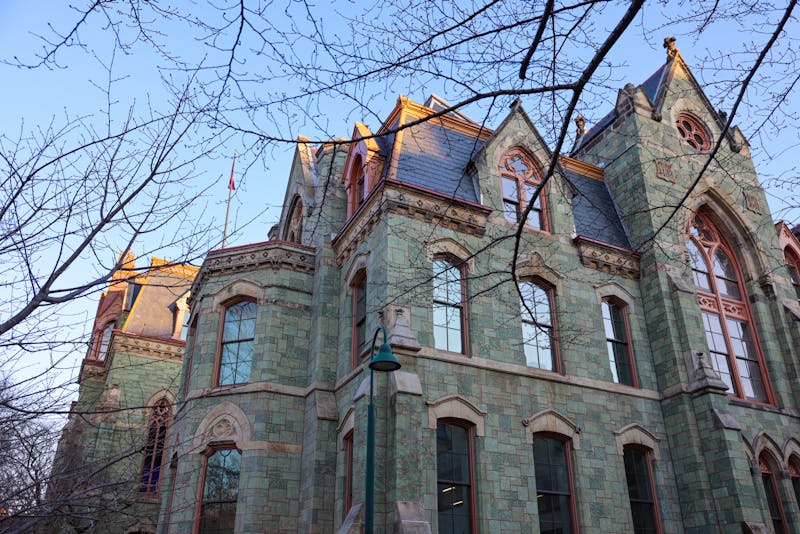Arthur Muir, a 1968 College and 1972 Wharton graduate, became the oldest American ever when he completed the climb in May.
The 75 year-old retired corporate finance lawyer from Northbrook, Ill. broke Bill Burke's record as the oldest ever American to summit; Burke completed the climb in 2014 at age 72. Muir is now the third-oldest climber from any country to reach the world's highest peak.
While Muir was aware that he would break the record for oldest American to climb Everest if he were able to reach the summit, he did not think anyone would care.
“The real story here is not about me, but is about how you can do really amazing things even when you're old,” he said. “You can do a bunch of things, if you just have a dream, set out with a plan, and work toward it.”
Muir's accomplishment garnered media attention across the country and his story has been featured in broadcasts such as the TODAY Show. Penn President Amy Gutmann also congratulated Muir for the feat on June 14 in a post on Instagram.
"Congratulations to Penn alumnus Arthur Muir, C68, WG72, who recently became the oldest American to scale Mt. Everest at the age of 75," Gutmann wrote. "His determination and courage is all the more extraordinary considering he only started mountaineering at the age of 68."
Muir grew up in Aurora, Colorado — where he first felt the allure of the mountains — and said he only climbed a few mountains in high school and college, including a handful of 14,000 foot high peaks. He was not a college athlete at Penn and described himself as an "ordinary guy."
He graduated from the College in 1968 and, after three years in the Army, he enrolled in Wharton, earning an MBA in 1972. As an undergraduate student, Muir was a member of the Phi Delta Theta fraternity in which he made friends with whom he is still in contact, he said.
Muir said that while at Penn, he regretted not having been more adventurous. He recalled that he was “an okay student,” but that he wished he had tried more things, such as lightweight crew or fencing.
Muir only formally began mountaineering at age 68. Muir said that when he first began climbing, he expected people to underestimate him because of his age or ask questions like “Can you walk?" and "Do you need a crutch?," but said he found the complete opposite.
"When I'm spending 60 days with people, you know, I don't have a mirror, so I can't see what I look like. I feel like I'm 55 because I can't see myself," Muir told ABC Chicago. "Then at the end, I look in the mirror and say, 'Oh yes, you are 75.' But you forget when you're with people doing all this stuff."
Since he began mountaineering, Muir has climbed volcanoes outside of Quito, Ecuador, scaled Denali in Alaska — North America’s highest peak — and has even skied off of Mount Elbrus — Europe’s tallest mountain.
Muir has been training to climb Everest for over two years after previously attempting to summit in 2019. Muir was forced to stop early in his journey due to a sprained ankle after falling off a ladder.
“I wasn’t ready,” he said. “Physically, I wasn’t ready; mentally, I made some mistakes.”
Muir started training with Uphill Athlete — a service that connects professional trainers to people training to climb mountains — after his first attempt in late 2019. Uphill Athlete trainer Seth Keena-Levin said of Muir's first Everest attempt that Muir was not physically ready to summit Everest when he first started working with him.
After years of daily training with the Uphill Athlete team, hours on an old NordicTrack machine, and workouts in his garage during the COVID-19 lockdown, Muir felt ready to try again in 2021. Keena-Levin recounted that he knew Muir was ready this time when he saw how much intensive work Muir could do during their workouts as well as Muir's ski trips and local hikes.
After receiving his COVID-19 vaccine this spring, Muir flew to Nepal and began his journey on March 23. The climb up and down the summit took 12 days total, and his mountaineering group reached the summit on May 23.
Expedition leader and expert mountaineer Garrett Madison led the group featuring Muir and at least 18 other climbers, including researchers, a dentist, and a former NFL player. Madison said that he admired Muir's thoughtfulness and care for the climbing team and mountaineering community. Muir dedicated posts on Instagram to each of the climbers on his team as well as the support staff.
“I really like keeping connected with people,” Muir said. “It’s somewhat like a cult. A good cult, in a sense.”
Due to Everest's difficult terrain, mountaineering expeditions typically rely on the assistance of the Sherpa people, who are indigenous to the Himalaya Mountains, to guide and navigate them through the rough environment. Muir praised the team's Sherpa guides Pasang and Dawa Bhote for their help in the reaching the summit.
"I cannot tell you how invaluable Pasang was to my success. I would never have made it without his help," Muir wrote on Instagram. "This is the person who should be on the news along with all of the other Sherpas who make these climbs possible."
Madison praised the 75 year-old for his feat of athleticism, saying that Muir had impressed him with his courage and strength during the expedition.
“[Muir's] strength is a combination of mental, physical and emotional strength,” Madison said. “He was definitely one of the strongest members in all three of those areas on our trip.”
The Daily Pennsylvanian is an independent, student-run newspaper. Please consider making a donation to support the coverage that shapes the University. Your generosity ensures a future of strong journalism at Penn.
Donate






